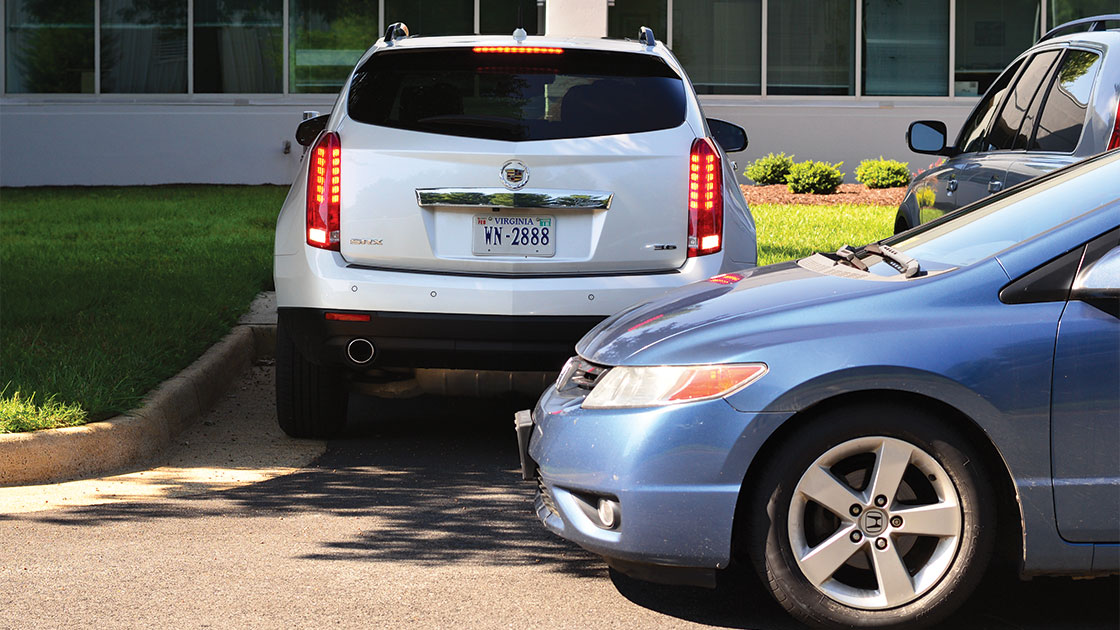GM’s rear autobrake reduces crashes
August 23, 2017

The benefits of autobrake are well-established when it comes to preventing front-into-rear crashes. Now, a new HLDI analysis indicates that a rear automatic braking system on General Motors models is reducing crashes reported to insurers.
HLDI compared losses for rear autobrake on the 2015 Cadillac ATS, CTS, SRX, XTS and Escalade (some 2013 and 2014 models were included, too) with losses for the same Cadillac models without the feature. Cadillacs with rear autobrake also have front autobrake, forward collision warning, a rearview camera, front and rear parking alerts, blind spot detection with rear cross-traffic alert and lane departure warning or lane-keeping support. The analysis controlled for the presence or absence of these features.
Rear autobrake uses ultrasonic sensors and short-range radar when the vehicle is in reverse to help the driver avoid hitting detected objects directly behind the vehicle. If the driver doesn't respond to warning beeps or seat vibrations, the system will automatically brake to avoid or mitigate the crash. GM's system operates at speeds faster than 0.5 mile per hour.
HLDI found a 26 percent reduction in the frequency of claims filed under property damage liability (PDL) coverage and a 13 percent reduction in the frequency of claims under collision coverage for Cadillacs equipped with rear autobrake compared with Cadillacs without the feature. Property damage liability covers damage to other vehicles and property. Collision coverage insures against physical damage to people's vehicles in crashes with other vehicles or objects if the drivers are at fault.
"Backing crashes usually don't occur at high speeds, but damage from the everyday collisions that happen when backing out of driveways and parking spots can be costly and time-consuming to repair," says Matt Moore, senior vice president of HLDI. "GM's reverse autobrake system is helping to alleviate some of these headaches for Cadillac owners. And it's another reminder that consumers don't have to wait for self-driving cars to reap the benefits of automated technologies."
HLDI examined the claims experience of other crash avoidance systems on Cadillacs, plus the 2014-15 Buick Lacrosse and Regal and Chevrolet Impala and the 2015 Suburban, Tahoe and Yukon.
Vehicles with both parking alerts and rearview cameras showed large reductions in the frequency of claims across physical damage coverages — a 17 percent reduction in PDL claims and a 7 percent reduction in collision claims. The frequency of bodily injury liability claims was 14 percent lower and the frequency of MedPay claims was 13 percent lower for models equipped with the combined system compared with models without the system. It's not clear how systems designed to prevent low-speed parking crashes are preventing injuries in the insured vehicles. HLDI and IIHS researchers continue to study these crashes to understand this effect.
Bodily injury liability coverage insures against medical and other expenses for injuries that at-fault drivers inflict on occupants of other vehicles or others on the road. MedPay covers injuries to insured drivers and passengers in their vehicles but not injuries to people in other vehicles involved in the crash. In no-fault insurance states, personal injury protection (PIP) pays for injuries to occupants of involved-insured vehicles, regardless of the driver at fault in the crash.
GM's forward alerts/automatic braking package combining camera- and radar-based forward collision warning with automatic braking, adaptive cruise control and lane departure warning or lane-keeping support is trimming the frequency of physical damage and injury claims under all coverages. Reductions range from 5 percent under collision coverage to 23 percent under PIP. GM's high-intensity discharge headlights are reducing the frequency of claims under PDL by 6 percent and PIP by 8 percent.